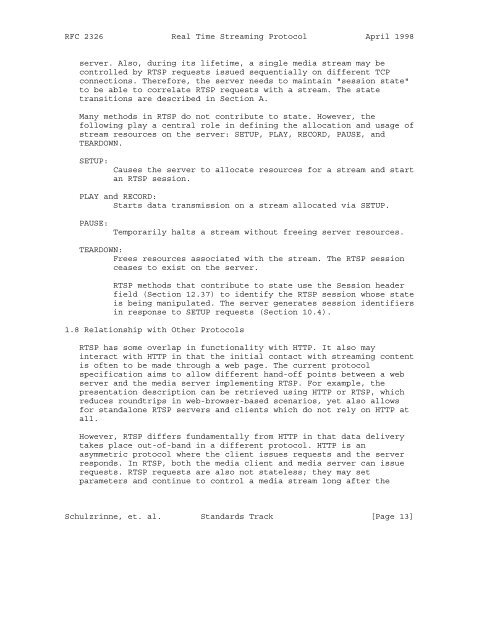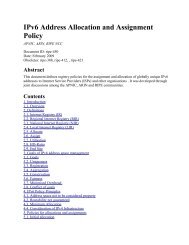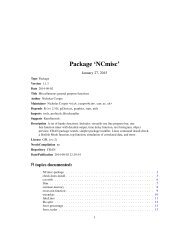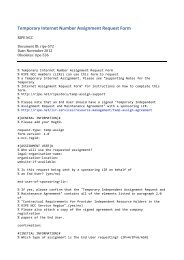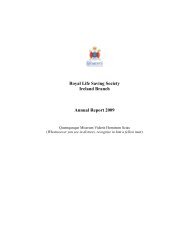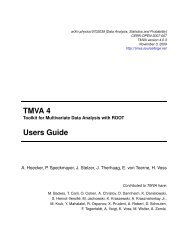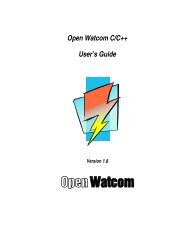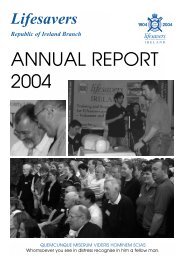Standards Track A. Rao Netscap - RFC Editor
Standards Track A. Rao Netscap - RFC Editor
Standards Track A. Rao Netscap - RFC Editor
Create successful ePaper yourself
Turn your PDF publications into a flip-book with our unique Google optimized e-Paper software.
<strong>RFC</strong> 2326 Real Time Streaming Protocol April 1998server. Also, during its lifetime, a single media stream may becontrolled by RTSP requests issued sequentially on different TCPconnections. Therefore, the server needs to maintain "session state"to be able to correlate RTSP requests with a stream. The statetransitions are described in Section A.Many methods in RTSP do not contribute to state. However, thefollowing play a central role in defining the allocation and usage ofstream resources on the server: SETUP, PLAY, RECORD, PAUSE, andTEARDOWN.SETUP:Causes the server to allocate resources for a stream and startan RTSP session.PLAY and RECORD:Starts data transmission on a stream allocated via SETUP.PAUSE:Temporarily halts a stream without freeing server resources.TEARDOWN:Frees resources associated with the stream. The RTSP sessionceases to exist on the server.RTSP methods that contribute to state use the Session headerfield (Section 12.37) to identify the RTSP session whose stateis being manipulated. The server generates session identifiersin response to SETUP requests (Section 10.4).1.8 Relationship with Other ProtocolsRTSP has some overlap in functionality with HTTP. It also mayinteract with HTTP in that the initial contact with streaming contentis often to be made through a web page. The current protocolspecification aims to allow different hand-off points between a webserver and the media server implementing RTSP. For example, thepresentation description can be retrieved using HTTP or RTSP, whichreduces roundtrips in web-browser-based scenarios, yet also allowsfor standalone RTSP servers and clients which do not rely on HTTP atall.However, RTSP differs fundamentally from HTTP in that data deliverytakes place out-of-band in a different protocol. HTTP is anasymmetric protocol where the client issues requests and the serverresponds. In RTSP, both the media client and media server can issuerequests. RTSP requests are also not stateless; they may setparameters and continue to control a media stream long after theSchulzrinne, et. al. <strong>Standards</strong> <strong>Track</strong> [Page 13]


